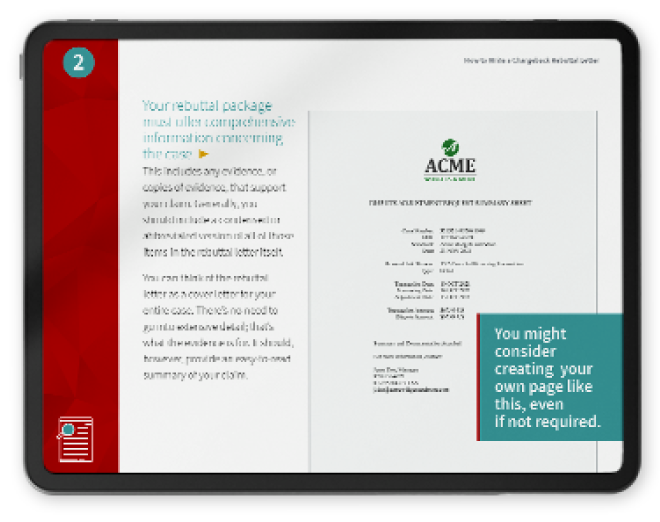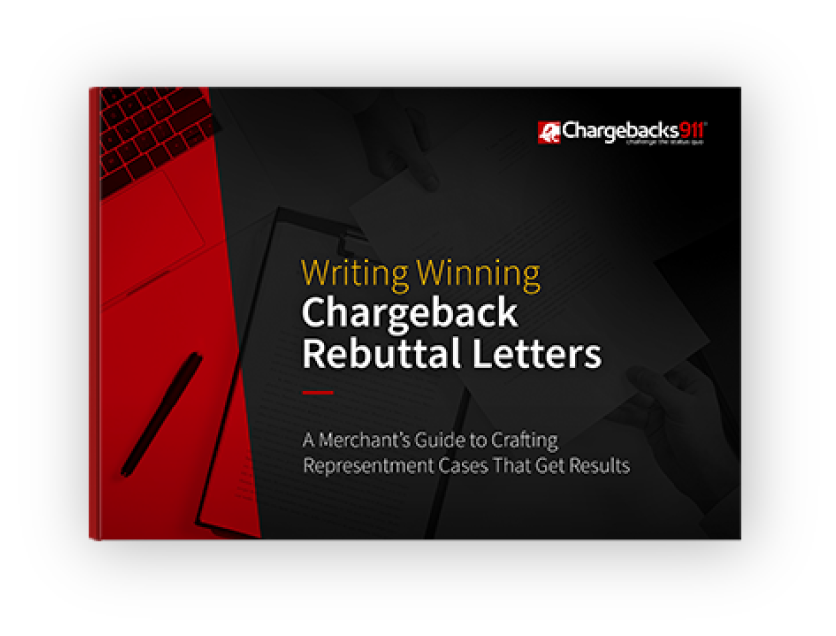Credit Card Chargebacks: How They Work & Other Key Info for Merchants & Cardholders
Credit card chargebacks are costly. In 2023, the average chargeback cost merchants $190. The frequency of chargebacks is also on the rise; in the same year, cardholders filed 238 million chargebacks. This figure, which represents a 6% increase from 2022, averages out to roughly 5.7 chargebacks per consumer per year.
Unfortunately, the lion’s share of chargebacks filed—anywhere from 60% to 75%—are estimated to be due to friendly fraud. These fraudulent chargebacks are filed by consumers when they intentionally or unintentionally dispute legitimate transactions.
But chargebacks aren’t inevitable, and both merchants and consumers can take proactive steps to prevent them. This article provides a primer on credit card chargebacks and the chargebacks cycle. Below, we also address legitimate and illegitimate chargebacks, and discuss ways consumers and merchants can avoid the hassles and expenses associated with the dispute process.
Recommended reading
- What Happens if You File a False Chargeback Claim?
- Provisional Credits: Here’s Everything You Need to Know.
- Here are the 7 Valid Reasons to Dispute a Charge
- Chargeback Stats: All the Key Dispute Data Points for 2025
- A Step-by-Step Guide to the 2025 Chargeback Scheme
- A Step-By-Step Guide to the Chargeback Process in 2025
What is a Credit Card Chargeback?
- Credit Card Chargeback
A credit card chargeback is a bank-initiated payment reversal for a credit card purchase. Rather than request a refund from the merchant who facilitated the purchase, cardholders can dispute a particular transaction by contacting their bank and requesting a chargeback.
[noun]/kre • dǝt • kard • charj • bak//
A credit card chargeback happens when the cardholder or the issuing bank disputes a credit card transaction. Chargebacks are commonly filed in response to transactions that involve fraud, merchant billing errors, or defective goods.
When a chargeback is filed, the transaction is reversed. Funds are withdrawn from the merchant’s bank account and the cardholder receives a provisional credit for the transaction being disputed.
The dispute process is an investigative process that allows the issuing bank to determine who is at fault for the transaction. If the disputed transaction occurred as a result of unauthorized activity, or because the merchant made a mistake, then the chargeback stays. When this happens, the merchant bears the cost of the credit card chargeback, plus additional fees.
If the disputed transaction resolves in the merchant’s favor, then the credit card chargeback is rejected, and the charge is reposted to the cardholder’s credit card statement. Unlike merchants, consumers are not charged additional fees for filing (or losing) chargebacks.
How Does the Credit Card Chargeback Process Work?
The chargeback process starts when a cardholder makes a complaint to his or her bank. If the bank believes the cardholder’s claim, they will reverse the charge by filing a chargeback. If the merchant believes the chargeback claim is invalid, they can try to recover their money by submitting evidence to the bank that counters the cardholder’s claim.
The credit card chargeback process typically involves several key players. We have the cardholder and merchant, as well as the cardholder’s bank (“the issuer”), the merchant’s bank (“the acquirer”), and the card network. Here’s how each step in the process works:
Valid Reasons to File a Credit Card Chargeback
A cardholder has a legitimate reason to file a chargeback if they see unauthorized activity on their credit card, if the merchant made a mistake in processing the transaction, or if the merchant misled them about the details of the purchase.
There are two basic reasons to file a credit card chargeback: criminal fraud, or merchant abuse. Banks might issue chargebacks for more complicated, authorization-related problems, but those are the two reasons you need to know as a cardholder.
Below, we share five valid reasons why cardholders may file credit card chargebacks:
Invalid Reasons to File a Credit Card Chargeback
Cardholders sometimes file invalid chargebacks. For example, chargebacks filed because of buyer’s remorse, or because the cardholder misread the merchant’s billing descriptor, would not be considered valid.
Invalid credit card chargebacks often happen because of innocent mistakes or misunderstandings on the cardholder’s part. To illustrate, here are five common situations in which a chargeback would not be the right response:
Of course, not all invalid credit card chargebacks happen by accident.
Intentional friendly fraud is a fast-growing problem, accounting for millions of dollars in losses every year. It negatively affects everyone involved. This includes you, the cardholder.

How Credit Card Chargebacks Impact Merchants
When a cardholder files a chargeback, the merchant loses the revenue from the initial sale, plus any merchandise shipped. They also pay a fee for every chargeback issued by a bank.
A merchant who loses a chargeback case is out both the transaction amount under dispute as well as any inventory and fulfillment costs. This is because a cardholder has no obligation to return the goods or services under dispute when they file a chargeback. That’s just the start, though.
To add insult to injury, merchants are assessed a fee for every chargeback they incur (usually between $20 and $100). The merchant’s acquiring bank and payment network will also closely monitor a merchant’s chargeback rate. This is defined as the number of chargeback cases divided by the number of transactions processed in a given period of time.
A merchant who experiences a high chargeback rate — usually anything over a 0.9% (Visa) or 1% (Mastercard) rate — may be placed in a high-risk merchant program. This “penalty box” status results in higher fees per each credit card chargeback occurrence. It may also require the merchant’s bank to monitor and report on the merchant’s transaction activity. This involuntary service means even more additional fees for the merchant.
The bank may require the merchant to establish a merchant account reserve, a mandatory chargeback emergency fund that ties up working capital and restricts withdrawals. In extreme cases, the bank may terminate the merchant’s account altogether. If the merchant wishes to remain in business, they would be forced to use a more expensive high-risk merchant account provider.
What Happens to Cardholders Caught Abusing Chargebacks?
Cardholders can suffer serious consequences for abusing chargebacks. The bank may exercise more oversight over their activities, and may even terminate their account in cases of clear abuse. This would negatively impact the cardholder’s credit score.
Consumers and merchants ultimately pay the price for chargebacks, but many cardholders aren’t aware they may suffer any repercussions. In fact, 81% of the individuals we polled said they’ve filed a chargeback out of convenience. Many say they would do it again.
We’re not here to scold anyone… but abuse of the chargeback process is bad news for everyone involved.
Credit card chargeback abuse could lead to:
Tips for Merchants to Avoid Chargebacks
In 1735, Benjamin Franklin remarked to Philidephians living in the fire-prone Pennsylvanian city that “an ounce of prevention is worth a pound of cure.” Although credit cards and payment networks weren’t around during Franklin’s time, the maxim holds true.
Simply put, merchants can dramatically reduce chargeback-induced losses by preventing them in the first place. Below, we outline a few prevention-focused actions that merchants can take to avoid chargebacks.
A chargeback alert is an advance warning provided by an issuer that merchants can receive via a third party like Verifi’s Cardholder Dispute Resolution Network (CDRN) or Ethoca.
Chargeback alert services track pending chargebacks and notify merchants before they are filed. This gives merchants between 24 and 72 hours to preemptively refund a transaction so that a chargeback won’t be filed.
Network inquiries are similar to chargeback alerts in that both prevent chargebacks from occurring. However, network inquiries eliminate the need for preemptive refunds by providing banks and cardholders with information about a transaction.
The logic is that a cardholder who can identify a purchase with more information is less likely to dispute it. Services like Ethoca Customer Clarity and Verifi’s Order Insight can therefore stop chargebacks before they start by reminding the customer that they did, in fact, make a legitimate purchase.
Good customer service helps build trust and a rapport with customers. This increases the likelihood that a customer will try to resolve a problem with a merchant directly before filing a chargeback.
Moreover, customers who consistently receive deliveries that are on-time and up to standard are more likely to forgive merchants for occasional errors and omissions. Other preventative tactics, like offering free tracked shipping, a product satisfaction guarantee, or an extended warranty, can also help merchants prevent chargebacks.
Learn more chargeback prevention tipsTips for Cardholder to Ensure They're Not Abusing Chargebacks
Like we discussed above, there can be serious consequences for cardholders that misuse the chargeback process. They should be careful not to engage in accidental or deliberate friendly fraud.
Here are a few tips to ensure this doesn’t happen:
Cardholders should try to contact the seller first before going to the bank. In most cases, this will result in faster resolution, as the chargeback process can take weeks (or even months) to finally resolve.
A cardholder may find, for instance, that merchants are apologetic about shipping defective goods and are eager to make amends. A billing descriptor that is unrecognizable at first glance may turn out to be a legitimate transaction that the cardholder simply forgot about. And a cardholder who buys from a reputable merchant may be pleasantly surprised by the simple, no-questions-asked refund process.
One common reason for friendly fraud is buyer’s remorse, which occurs when a buyer purchases something on impulse, only to regret it shortly afterwards. Customers should think deeply about whether a purchase makes sense for their daily needs. Is this a “need to have” or a “nice to have” item? If it’s a “nice to have” item, will that still be true once the novelty wears off?
Next, buyers should do some pre-purchase due diligence. Look at online reviews, ask for recommendations, watch some videos about the product, and compare alternatives. Finally, buyers can avoid impulsive decisions by establishing a “cooling-off” period for purchases above a certain dollar threshold. If the urge to buy a product disappears after 48 hours, then maybe it wasn’t worth purchasing.
One common cause of friendly fraud is family fraud, which occurs when family members of a cardholder make unauthorized purchases on the cardholder’s account.
Cardholders can prevent this by sharing personal card details sparingly, even if the person requesting them is a parent, child, sibling, or close relative. If a family member makes a purchase, have them do it in the cardholder’s presence. If a purchase is made online, have the family member use a private or incognito window so that the payment information is not automatically saved. And, if adding relatives as authorized users to their credit cards, be clear about spending limits, permitted purchases, and prohibited transactions.
Credit Card Chargebacks Are Costly… But Not Inevitable
A proactive focus on detection and prevention can help merchants steer clear of the high costs associated with the pre-arbitration and arbitration stages of the chargeback cycle. Practicing excellent customer service, rectifying errors proactively, and using third-party alert and inquiry tools can enable merchants to resolve chargebacks well before they occur in the first place.
Consumers also have a role to play in preventing chargebacks. Avoiding common causes of friendly fraud like buyer’s remorse or friendly fraud can go a long way in reducing the frequency of chargebacks filed. The same applies for working with the merchant to resolve errors and product issues before filing a dispute.
FAQs
What happens when you do a credit card chargeback?
When you file a credit card chargeback, your issuing bank will review the transactions under dispute. If the dispute resolves in your favor, the charge is reversed and the merchant bears the cost of the transaction, including additional chargeback fees. If the dispute is resolved in favor of the merchant, the charge is not reversed and remains on your credit card statement.
What qualifies for a chargeback?
You can file chargebacks against unauthorized or fraudulent transactions. You can also request a chargeback for transactions that involve merchant errors, defective or missing goods, or severely delayed shipments.
Are credit card chargebacks illegal?
No. Disputes filed against unauthorized charges, transactions that involve merchant error, or purchases of defective goods are all examples of legal and legitimate chargebacks. However, illegitimate chargebacks (also known as chargeback fraud or friendly fraud) are technically considered forms of wire fraud.
Does a chargeback hurt your credit score?
No. Filing a valid chargeback request does not impact your credit score. In fact, successfully disputing an incorrect or unauthorized charge may even lower your credit utilization ratio and improve your credit score. That said, abusing the chargeback process can hurt your credit.
Who loses money in a chargeback?
Merchants bear the cost of chargebacks in the form of lost revenue, lost inventory, and chargeback fees.
Why do companies hate chargebacks?
Companies hate chargebacks because they are costly and time-consuming. Banks tack on between $20 and $100 in fees every time a merchant receives a chargeback. In addition, buyers who win chargebacks are not required to return the goods or services under dispute chargebacks. Finally, chargebacks take time to resolve. Merchants must collect evidence, submit a case, and provide rebuttals for every dispute they wish to challenge.















